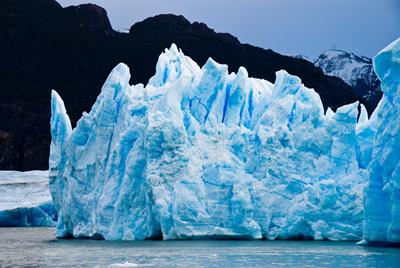Research examines new links between retreating glaciers and global warming

University of Southampton scientists are using innovative technology to monitor the behaviour of glaciers in real time, in a new bid to understand the link between their retreat, global warming and rising sea levels.
The Southampton researchers, who are part of the international Glacsweb project, have developed technology to monitor glacier behaviour. They have used unique sensor probes placed in, on and underneath the glacial ice. These sensor probes measure temperature, pressure, stress, weather and subglacial movement.
The information gathered is important in understanding a glacier’s dynamics and this data helps the team to study climate change.
As part of the team’s latest investigation, data retrieved from probes in Skálafellsjökull, Iceland, showed that the increased volume of glacier melt water is increasing the speed in which glaciers in the area are shrinking.
Moreover, the study, published in Nature Communications, revealed how melt water produces a distinct seasonal style of glacier stick-slip motion and showed that relatively small events occur every day during the summer, and during the winter there are larger multi-day events related to warmer days. As a result, for the first time, the team have been able to relate these processes to till sedimentology.
These findings demonstrate how small changes in melting, driven by air temperature rises, have a significant effect on a glacier’s behaviour. They also show that during winter, contrary to expectations, they are very active.
The study’s findings have important implications because unconsolidated beds underlie many of the fast flowing ice streams of modern day Antarctic as well as the Quaternary ice sheets.
Jane Hart, Professor in Geography at the University of Southampton and lead author of the study, said: “All glaciers are retreating which is effecting sea level rises and glacier melt water can accelerate the retreat. It’s virtually impossible to get inside one, therefore we have designed probes which were put into them and we were able to retrieve live date for the first time.
“Glaciers all over the world are retreating, but the rate they do so is dependent on numerous factors. Those in Iceland are retreating at different rates and both have rapidly growing lakes, which threaten to cover the whole glacier front, and affect their stability.
“As part of this latest study we hope to determine what is controlling their velocity, the rate of lake growth and how this growth is affecting ice retreat as we continue to contribute fundamental research in glaciology and wireless sensor networks.”
The team are now developing new technologies to investigate a series of other glaciers resting on unconsolidated sediments from both Iceland and elsewhere. This includes the first web connected GPS system. Initial results show that they are also responding to changes in melt during both summer and winter.
Glacsweb aims to use technological advances to understand what happens beneath glaciers and how they are affected by climate.
Kirk Martinez, Professor in Electronics and Computer Science at the University of Southampton, added: “An important challenge today is to understand climate change and its effect on sea level rise. Glaciers are a key element, but their behaviour is poorly understood. The melting of West Antarctica’s ice is not only controlled by snow fall and surface melting but also by processes under the ice.
“This research gave us a lot of exciting technical challenges and it is great to see that the data it produced is so useful to earth science. The emergence of small, low cost accurate GPS units has allowed us to put together a solar powered system which measures ice position and sends the data quickly and efficiently.”
